Mortgage applications decreased 0.8% week over week, even as rates stayed near historic lows.
Blog
Month: <span>July 2020</span>
In looking back, what do you think is responsible for keeping your business going this year? Is it your team leader, colleagues, digital platforms or communication tools?
What are the most important trends to watch? How can agents make sure they thrive in this new normal? What are some noteworthy apps to consider? These distinguished female real estate leaders share their best tips.
What’s the one strategy that’s had the biggest impact on your business? That’s what I asked these top team leaders. Whether you’re building a team or looking for ways to boost your bottom line, check out these short videos for inspiration.
After a decade-long music career, Jason Castro is now all-in on real estate. He spoke with Inman about his year-old team, shutting down during the pandemic and how they are now handling a hot Dallas market.
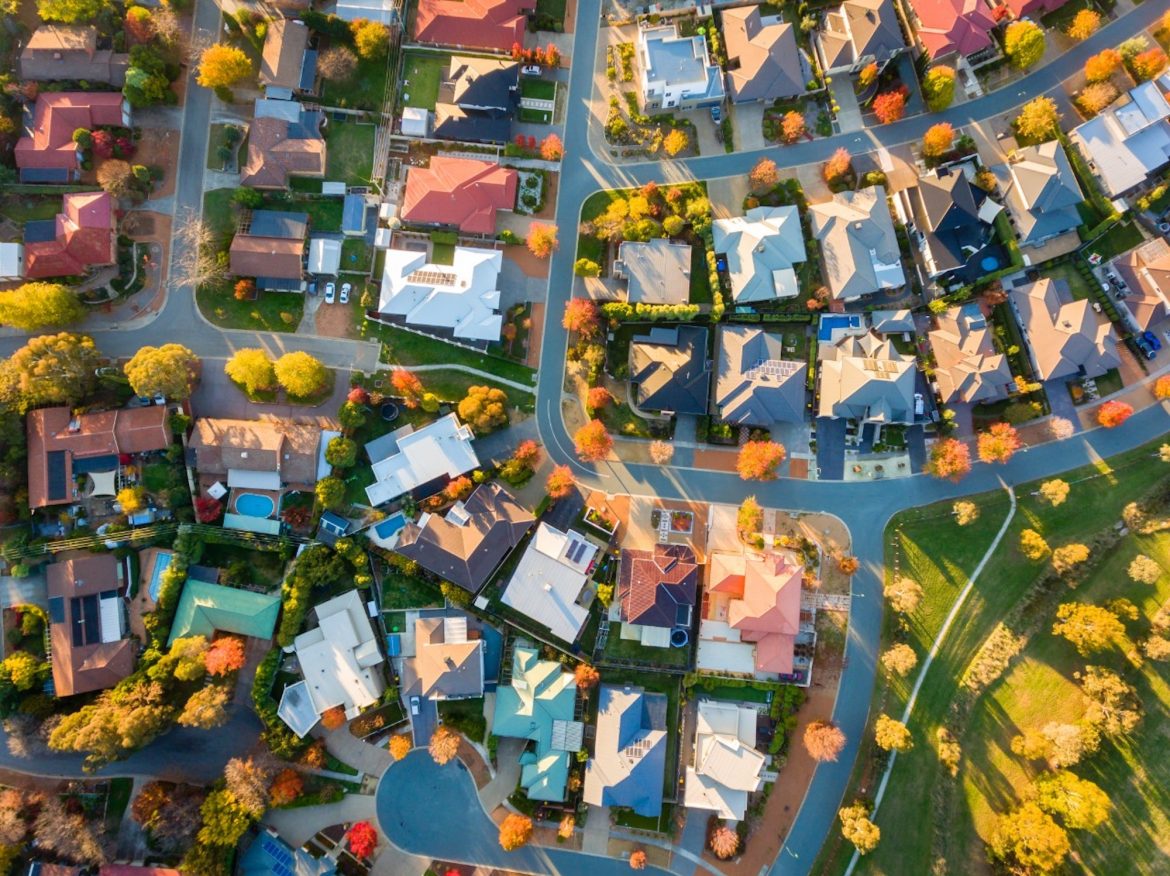
From wage subsidy and loan holiday extensions, to further stamp duty exemptions for new home buyers in New South Wales, it’s been a week of major announcements for Australians who had been anticipating a fiscal cliff at the end of September.
The ‘September cliff’, which could have plunged hundreds of thousands of people and businesses into devastating financial circumstances, is now looking more like a “September slope”, which is a positive turn of events for the economy and the property market, according to Nerida Conisbee, chief economist at realestate.com.au.
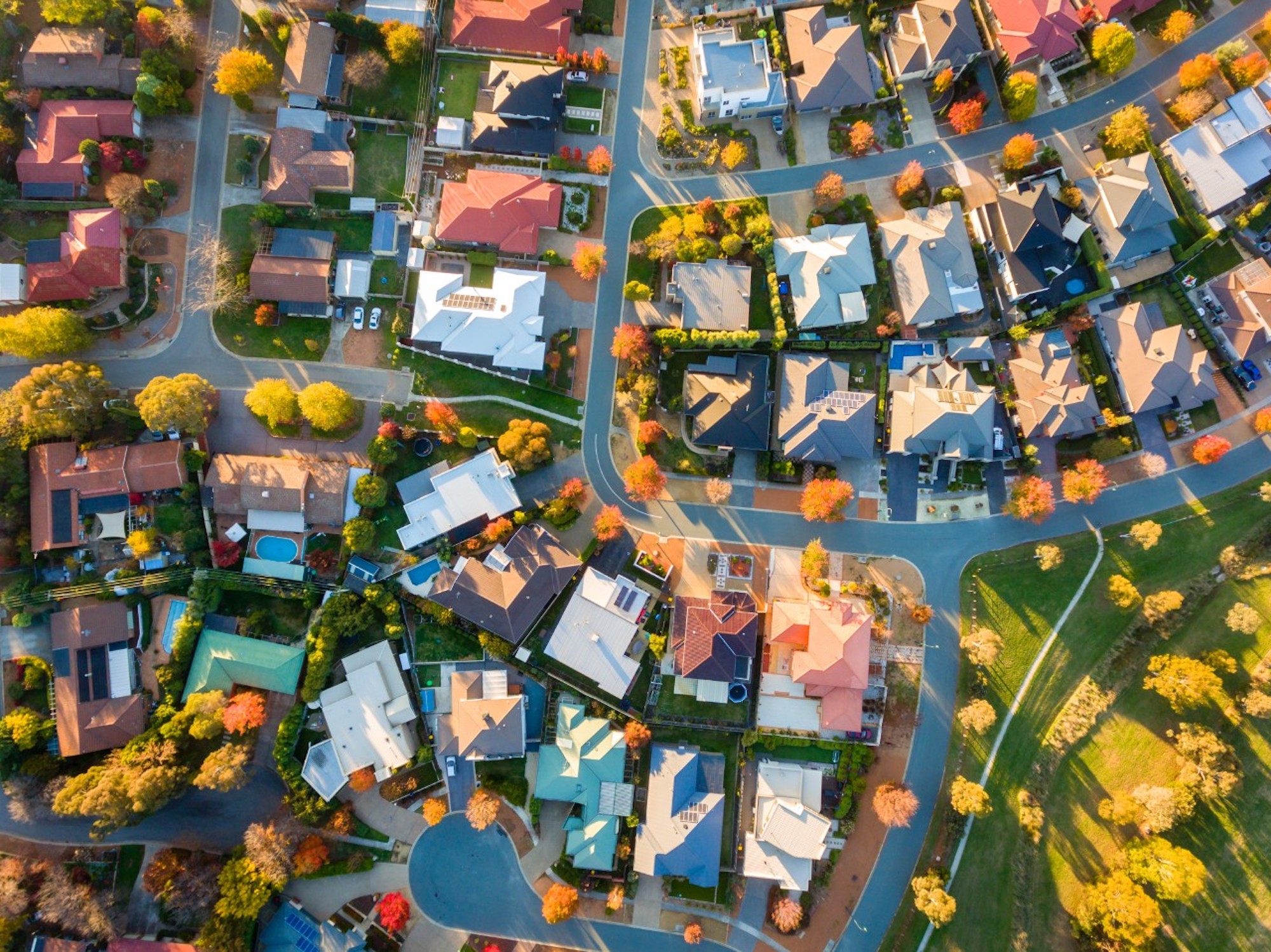
The extension of JobKeeper and mortgage freezes has been a positive turn of events for the property market. Picture: Getty
“Initially JobKeeper [payments] were going to cut out in September, along with mortgage loan holidays from the banks. We were headed from a situation that was supportive of the economy and supportive of property to a situation of no support,” Ms Conisbee said.
“[Now] government and financial sector support will be gradually tapered back, not abruptly cut off as was scheduled. Luckily for Australia, our government’s fiscal position is looking pretty good, relatively speaking, and our banks are cashed up. This puts us in a very good position to cope with the severe disruption to our ability to work properly.”
Ms Conisbee said the extension of JobKeeper payments at reduced rates until March 2021 – and a further four months of mortgage relief for eligible mortgage holders (detailed below) – will prevent high levels of mortgagee sales, help stabilise property prices and promote consumer and business confidence as the country wades through the economic fallout from COVID-19.
“Hopefully over the next six months we see a continued improvement in the economy. Things are unlikely to go back to normal anytime soon, but at least we’re getting more used to working in this very abnormal environment,” she said.
The government is taking a long-term view of COVID-19
The move to extend JobKeeper is proof that the federal government realises that COVID-19 will be a long term issue for many Australians.
According to Thursday’s July Economic and Fiscal Update, weighing up the devastating impact of the health crisis on the economy, unemployment in Australia is expected to peak at 9.25% by Christmas. That’s another 240,000 people out of work.
The current unemployment rate sits at a 22-year high of 7.4% with some 992,000 people jobless.
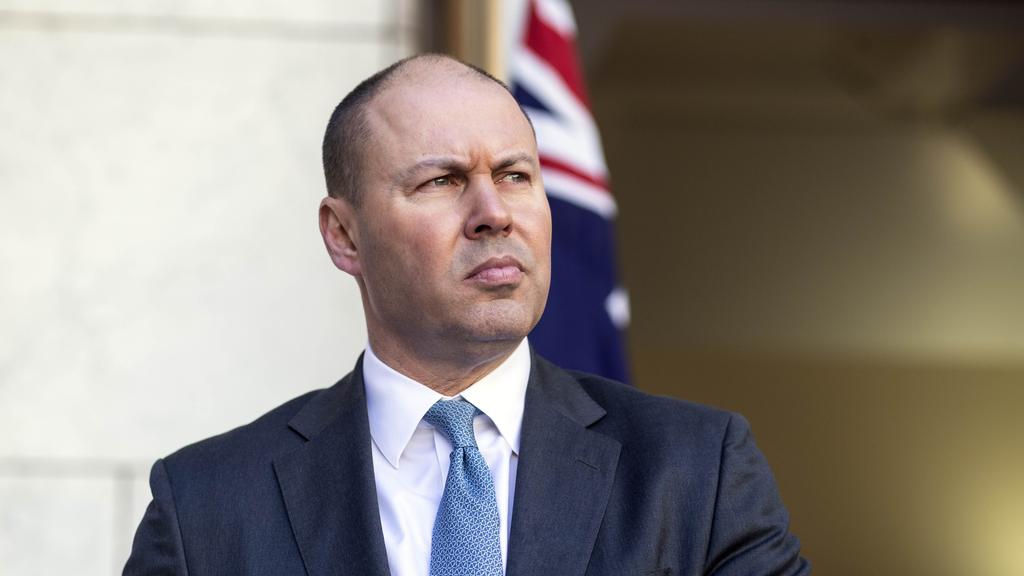
Treasurer Josh Frydenberg says unemployment is expected to rise above 9% by Christmas. Picture: Getty
In addition, Treasurer Josh Frydenberg confirmed the nation is facing its biggest budget deficit since World War II.
The forecasts for unemployment indicate that it is going to remain high for some time, said executive manager of economic research at realestate.com.au, Cameron Kusher.
“In previous recessions we have seen that it takes a long time for the unemployment rate to return to its pre-recession levels. Even after the Global Financial Crisis [in 2007], the unemployment rate in Australia has never returned to its pre-GFC levels, Mr Kusher said.
“The federal government itself has stated that without JobKeeper the national unemployment rate would be well above 10%, compared to the 7.4% it is currently… so the gradual tapering of support measures, rather than an abrupt removal in September, should help minimise the spike.”
Higher rates of unemployment will likely have repercussions for the property sector, particularly if the economy doesn’t pick up by the time renewed JobKeeper payments and mortgage holidays expire.
“With stimulus now in place until next year, depending on how the economy and COVID-19 infections are sitting, we may just be delaying the economic problems until later, but that will remain to be seen,” Mr Kusher said.
A property price plunge is unlikely
Earlier this year, some property analysts predicted that Australian property prices could plunge by as much as 30% by the end of the year, if coronavirus restrictions were extended for six months. But with support measures set to remain in place beyond September, the impact on pricing will be minimal, said Ms Conisbee.
“The September cliff would have had a far more dramatic impact on pricing because the end of mortgage freezes and less support from government would have led to a declining ability for many people to service home loans, forcing them to sell up,” she said. “The end of JobKeeper would definitely have had an impact but the banks withdrawing support would have had a very big impact, particularly in some locations.
“So pricing is not going to go anywhere for now, and we’re unlikely to see the plunge that was forecast early on.”
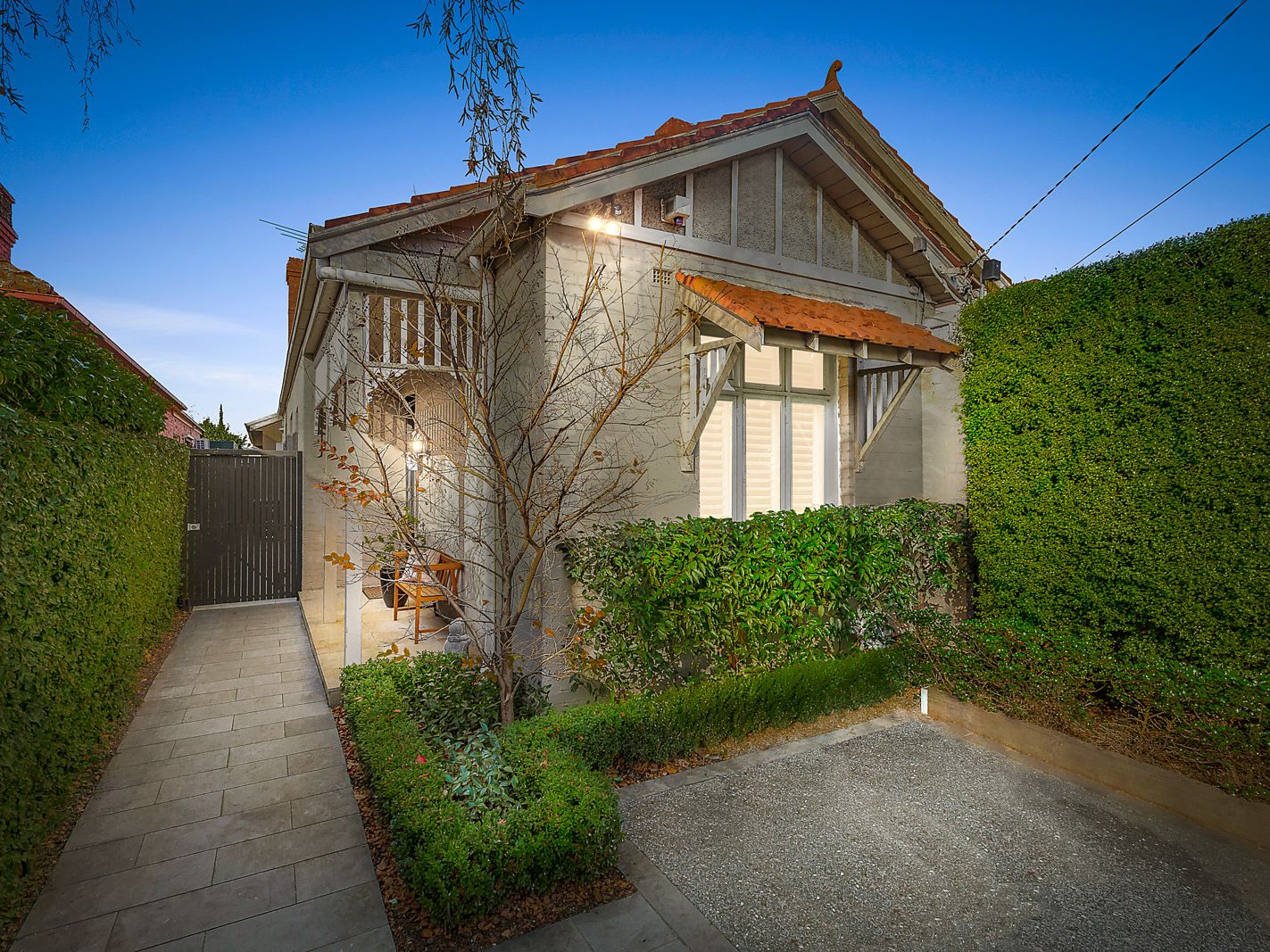
Property prices are not expected to fall anytime soon. Picture: realestate.com.au/buy
Buyers advocate and Real Estate Buyers Agents Association of Australia (REBAA) president, Cate Bakos, said property prices largely depend on supply, which has been very low in major capital cities like Melbourne and Sydney. However, she said that undersupply will start to improve leading into September and post-September because of seasonality.
“Putting coronavirus to one side, if we look at when people like to go to market it’s always when the sun is out, particularly in the southern states,” Ms Bakos said.
“I think while this year has been very, very different to normal years, we’re still going to see vendors deciding to sell when the sun is out, the flowers are out, the birds are chirping and it’s less miserable.
“If we see an emergence of buyer activity in September/October that matches seller activity then the market will have more transactions but the supply/demand ratio will remain the same.
“If sellers outstrip buyers, then that will ease conditions for buyers, and when you have eased conditions you might have some price contraction or you’ll just find that purchasing is that bit easier because of less competition.
“You’re buying the property at the reserve price or the asking price as opposed to properties exceeding the reserve price.”
There will be no rush of distressed sales
With a fiscal cliff earmarked for September, many prospective home buyers were expecting an influx of distressed sales towards the end of the year, which would have sent prices downwards.
But Ms Bakos said she never subscribed to the idea that September would be a “bloodbath”.
“If people are in grave danger with their incomes or they’ve lost their jobs and their businesses have sustained such downturns that they know that they are going to be needing to sell, they don’t typically wait for the bank to step in and force a mortgagee sale,” she said.
They’ll usually take matters into their own hands and start planning immediately. “So it’s fair to say that there have already been some of those sales,” said Ms Bakos.
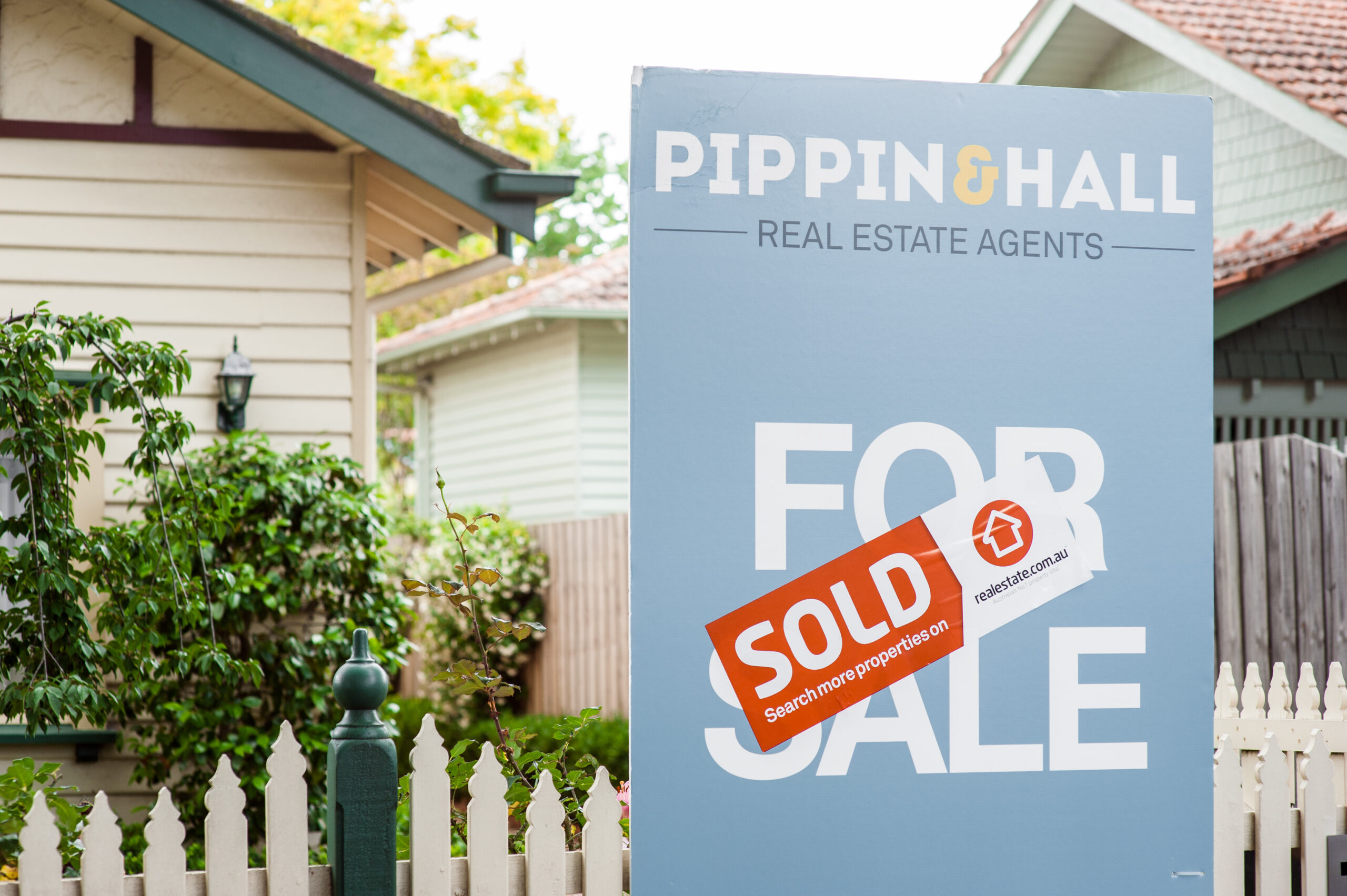
Experts say many people desperate to sell have already sold. Picture: Kate Hunter.
She added that the extension of JobKeeper has “kicked the can further down the road” for consumers.
“For anyone who was wanting to make a purchase and then thought they would wait until September or October, they might be saying to themselves, ‘We’re not going to see any wash out of this until at least March next year anyway so let’s just go and buy something now’,” she explained.
Without a clear view of the future, some home owners might be considering selling while property prices remain stable. Additionally, those facing financial hardship could be considering cutting their losses in anticipation of tough times ahead when JobKeeper and mortgage holidays taper off.
Ms Conisbee said the decision to sell ultimately depends on your situation.
“If you’re an owner/occupier [in financial hardship], I think it’s a good idea to speak to your bank earlier rather than later just to understand your position. From a bank’s perspective, there’s no benefit in mortgagee sales,” she said.
“Even if you’re an investor, if you feel like you will be unable to pay off your loan, maybe now is a good time to sell. But unless there’s a real desperate need to sell then I think it’s better to try and work through it rather than dispose of the property.
“Look at the available options, particularly given the banks are being fairly accommodating for most people… a lot of banks are now looking at interest only, which will help a lot of people get through periods of unemployment.”
Landlords could grow tired of vacant rentals
Since mid-March, the health pandemic has seen several industries, namely tourism, education and hospitality, come near to a grinding halt. As a result of job losses, many tenants have found themselves unable to afford their rent, reducing demand in the rental market and leading to an increase in vacant homes.
With increased unemployment on the horizon, and reduced rates of government stimulus to support virus-hit Australians, it’s likely that more tenants will be forced to vacate their homes in pursuit of cheaper accomodation.
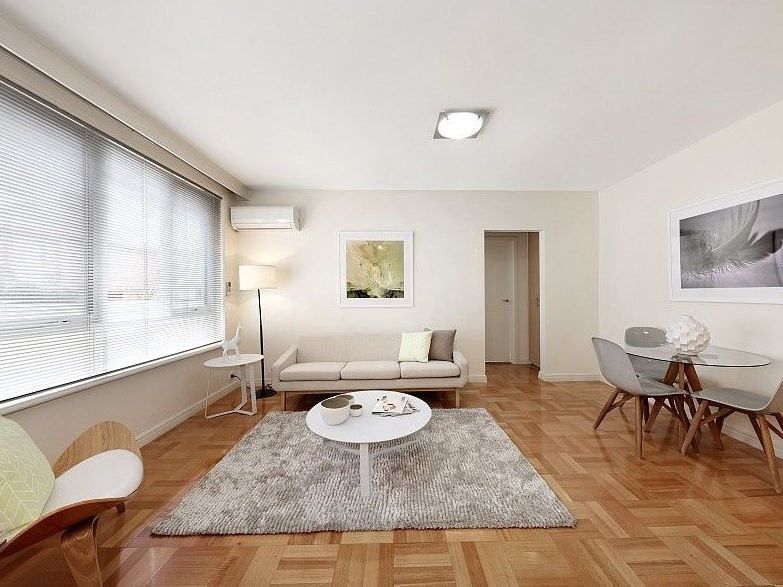
There could be an influx of apartments on the market as landlords struggle to fill vacant rentals. Picture: realestate.com.au/rent
Pete Wargent, buyers advocate and co-founder of Buyers Buyers – an online portal connecting home buyers with buyers advocates, launching in August – said the influx of rental vacancies, particularly in big cities like Melbourne and Sydney, could lead to an increased number of apartments on the market in the coming months, despite the extension of support measures.
“People can stomach rental vacancies for a while, but there does come a pain point eventually where landlords would rather sell. And so I think just the sheer number of vacancies in the apartment market will actually force more stock onto the market,” Mr Wargent said.
First-home buyers will drive the property market
Record-low interest rates and other government incentives, such as the new HomeBuilder scheme, have created a favourable environment for buyers who still have reliable employment amid COVID-19, particularly first-home buyers.
“There’s an awful lot of stimulus being tipped into the first-home buyer segment… so that’s really going to be the driver, which suggests that the property market will be supported from the bottom end up,” Mr Wargent said.
“There’s all kinds of different measures around the country and states being rolled out in terms of stamp duty, the 5% deposit scheme, government grants and so on. So I’d say the biggest share of buyer activity in the next year will be from first-home buyers.”
Support measures unpacked
Aside from the early weeks of the coronavirus pandemic, July has arguably been the biggest month when it comes to announcements that will impact property. Here is a breakdown:
JobKeeper wage subsidy and JobSeeker supplement
On 21 July, the federal government announced the JobKeeper wage subsidy would continue for a further six months until March 2021, but payments will be reduced from $1,500 to $1,200 a fortnight after September. People working fewer than 20 hours a week will receive $750.
In the first three months of 2021, the payments will drop to $1,000 a fortnight, and $650 a fortnight for people working fewer than 20 hours a week.
The $550 JobSeeker coronavirus supplement will continue for another three months beyond September but will be cut by $300 reducing the payment to $250 a fortnight – meaning people on the program will receive $815 a fortnight after September.
Mortgage loan holidays
On 8 July, the Australian Banking Association announced that Australian bank customers with reduced incomes and ongoing financial difficulty due to COVID-19 will be able to extend their mortgage deferrals by up to four months.
This next phase of loan holidays will not be automatic and banks will contact customers as they approach the end of their deferral period, to help them find the best options to restructure or vary their loan.
Options may include:
- Extending the length of the loan
- Converting to interest-only payments for a period of time
- Consolidating debt
- A combination of these and other measures
Customers who can restart paying their loans will be required to do so at the end of their six-month deferral period.
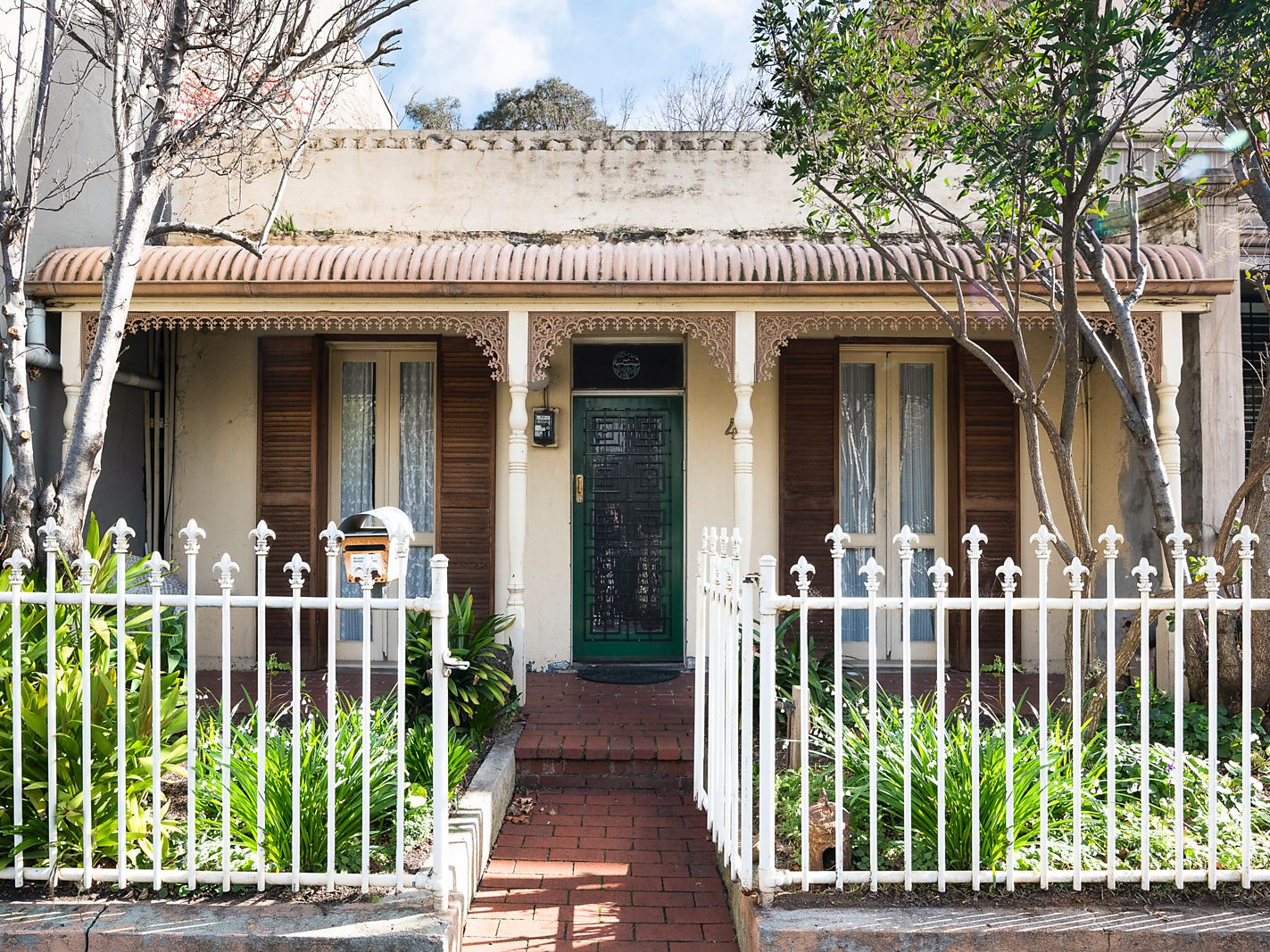
Eligible bank customers will be able to extend their mortgage deferrals by up to four months. Picture: realestate.com.au/buy
Further stamp duty exemptions in NSW
On 27 July, the NSW government announced stamp duty will be temporarily abolished for first-home buyers purchasing newly built properties.
Commencing 1 August, the threshold above which stamp duty will be charged on new homes for first-home buyers will increase from the current $650,000 to $800,000, with the concession reducing on higher values before phasing out at $1 million.
The stamp duty threshold on vacant land will rise from $350,000 to $400,000 and will phase out at $500,000.
The 12-month initiative will only apply to newly built homes and vacant land, not to existing homes.
The post The ‘September slope’ and what it means for the property market appeared first on realestate.com.au.
As Jay Thompson and his wife battened down the hatches for Hurricane Hanna, he realized the striking similarities between the tropical storm and the real estate transaction.
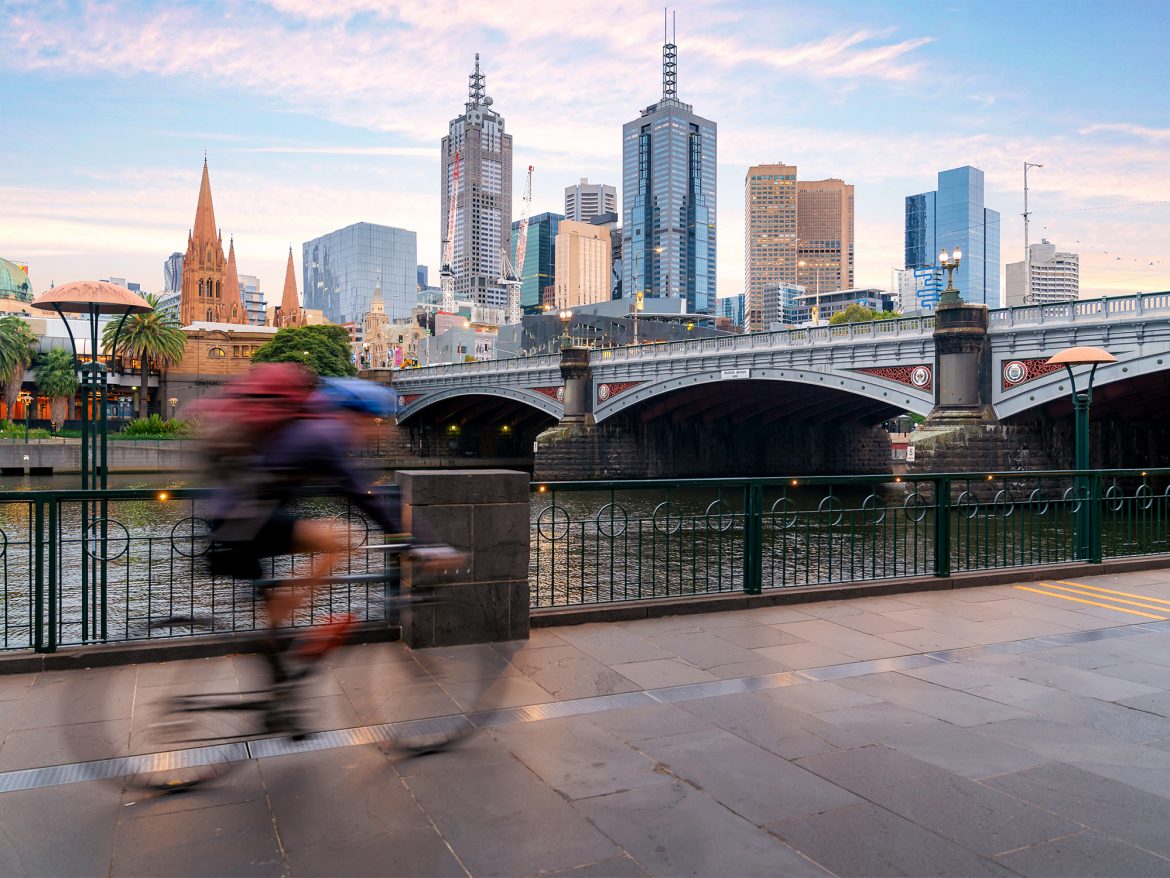
Amid the financial turmoil of the coronavirus health pandemic, the Victorian government has announced a $150 million funding package to support the state’s most vulnerable, which homelessness advocates say could help end homelessness.
On Tuesday 28 July, the Andrews Government revealed it would rollout the From Homelessness to a Home package, addressing the needs of those experiencing housing instability and homelessness, and helping them find safe and secure accommodation.
Revealed on the government’s social media feeds, the funding will support a move from temporary to long-term housing, covering the leases of more than 1,000 private rental properties.
It would also provide tailored assistance to each tenant, including mental health, drug and alcohol and family violence support services.
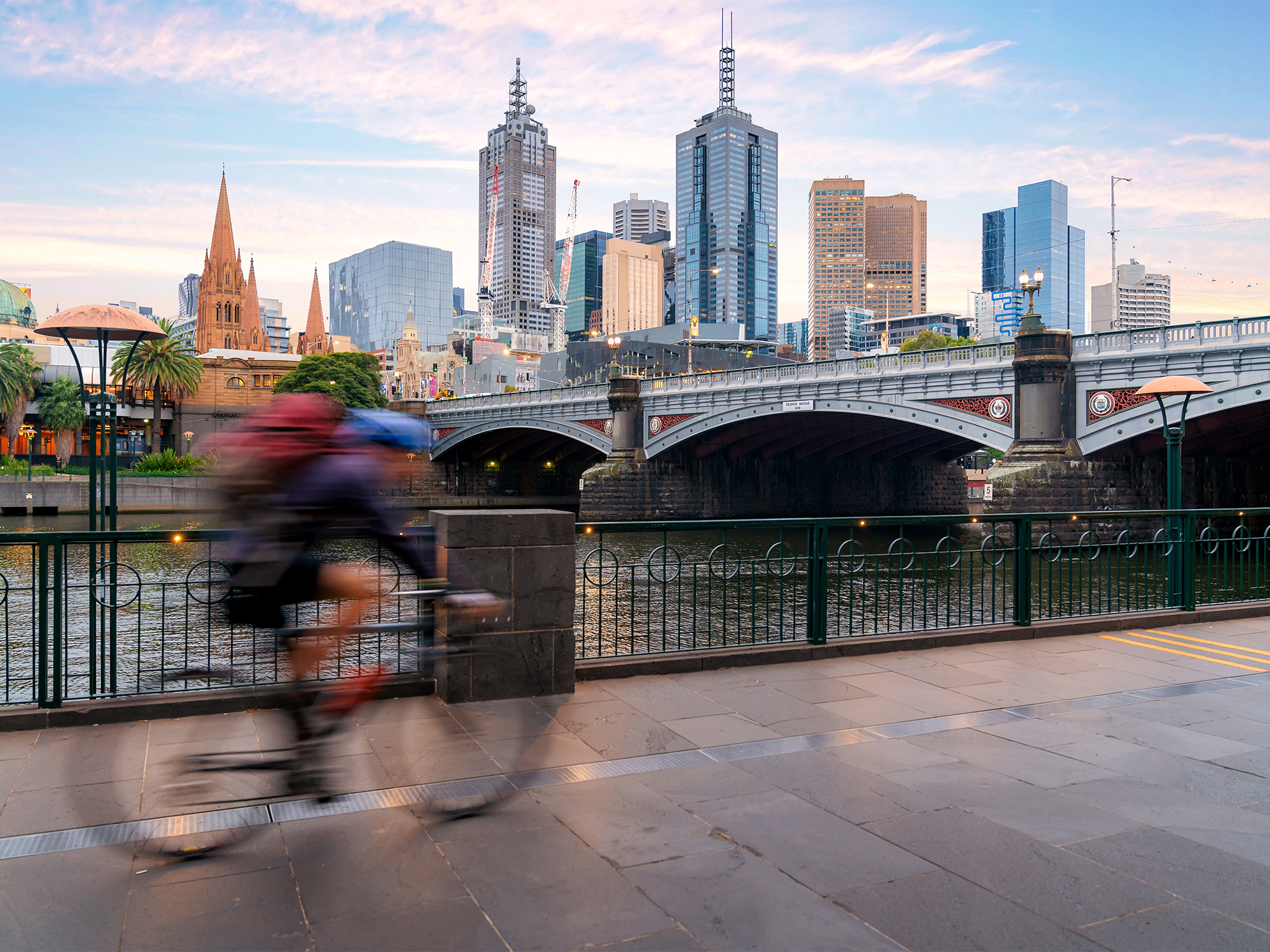
As Melburnians obey physical distancing rules they’re reminded that not everyone is lucky enough to have homes to stay in. Picture: Getty
The government also announced it would cover these accommodation arrangements until April 2021, with funding to be delivered to metropolitan and regional homelessness agencies.
The pandemic has changed homelessness in Melbourne
When it comes to the way homelessness has shifted during the health crisis, the numbers are confronting. According to Launch Housing chief executive officer Bevan Warner, homelessness figures have risen 25%, with people being pushed out of couch-surfing arrangements due to physical distancing.
Mr Warner told realestate.com.au, his organisation was also worried about a second wave of homelessness once the federal government stimulus support reduces or ceases entirely early next year.
“This announcement provides the promise of a permanent home and support for the 2000 people who are the most vulnerable in our community and that’s a wonderful morale boost for our clients and workers who have been living with daily uncertainty,” Mr Warner said.
He wanted to see all levels of government work together to ensure there’s enough funding in place to support those in need, which he says will also assist the economy in general to recover.
“Housing is the foundation for a productive and dignified life. Without a home, people can’t think about getting back into work or training or address their physical and mental health needs. They’re concentrating on survival 24/7,” he said.
“A pipeline of social housing will prop up the economy and support jobs, and it will also produce an enduring social benefit
“The virus has shown us that our own health is intimately connected to the health of the person next to us and that everyone needs shelter.
“This is a wonderful opportunity for us to turn this crisis into a positive and be a world leader for ending homelessness. We know we can do it.”
“Homelessness isn’t an identity”
The COVID-19 pandemic has helped the broader community become more aware of the plight of those in insecure housing, Mr Warner said.
“We’re noticing an increase in empathy as the general community is confronted with their own insecurity and anxiety about the world or their economic security because one or more in a family are in economic stress,” he said.
“They’re thinking about the four walls they’re in and worrying about the world and this is creating a cross-over connection to being concerned for others.”
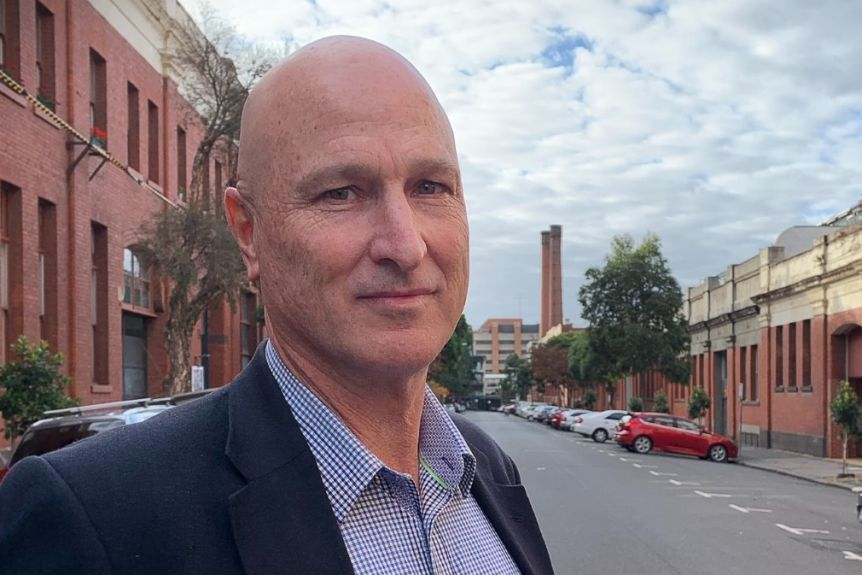
Launch Housing chief executive officer Bevan Warner wants governments to use the crisis as an opportunity to solve homelessness. Picture: Supplied / Launch Housing
Mr Warner said people experiencing homelessness have largely faced hardship that could include previously undisclosed childhood abuse, the death of a partner or the loss of a small business.
“There’s no one entry or exit into homelessness. Homelessness isn’t an identity, it’s an experience people have,” he said.
“While we can’t prevent every experience of trauma or bad luck or violence in our community, we can make sure the experience of homelessness is a one-off and of a short duration.”
The post Victorian government’s $150m pledge for rent support could “help end homelessness” appeared first on realestate.com.au.
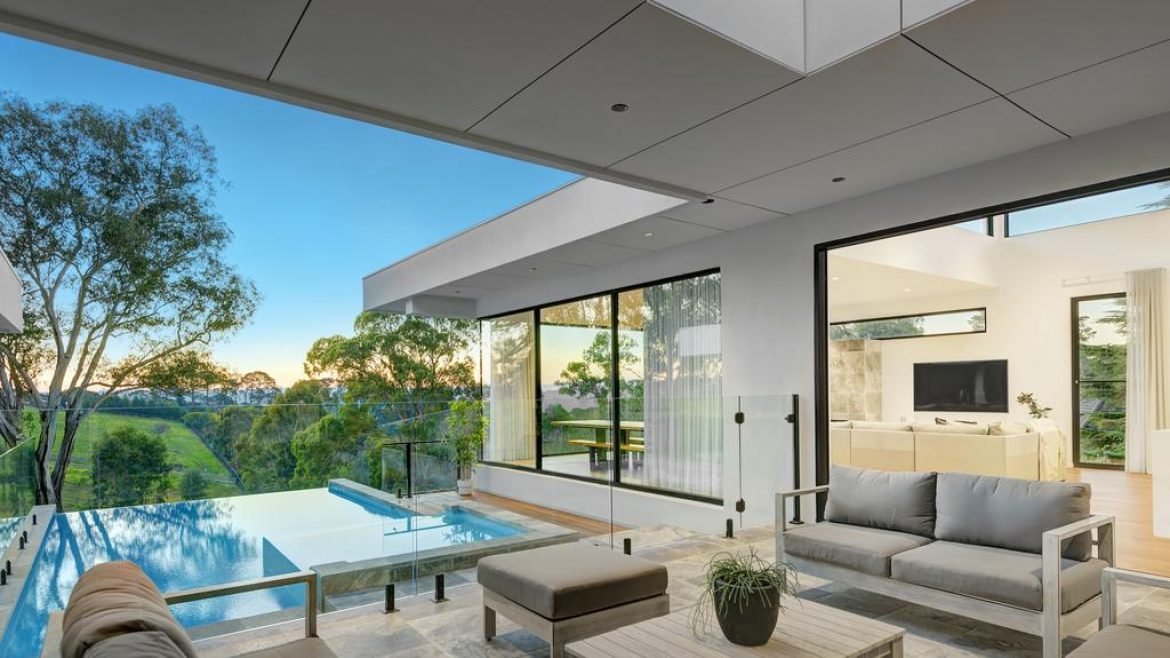
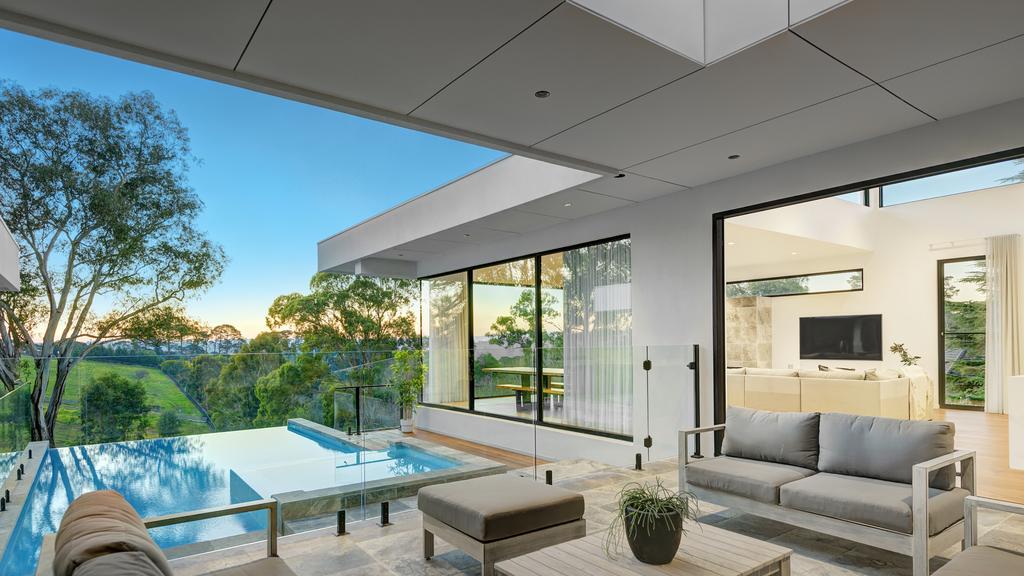
How good is this?
Queensland may be off limits. But when the weather warms, the next owners of this resort-style Templestowe abode will be able to have just as much fun holidaying at home.
The near-new house has hit the market with a $3.7-$4m asking price that includes an infinity pool and spa with a glorious green outlook, and an adjoining pool house featuring a bar.
The 51-53 Newmans Road property also offers 4100sq m of land, giving occupants the feeling of being at their own private getaway.
RELATED: Templestowe Golden Mile ‘French palace’ mansion to sell big
Converted barn, Templestowe: Rare property sells after two years
Hotspotting: Donvale and Templestowe leading the charge
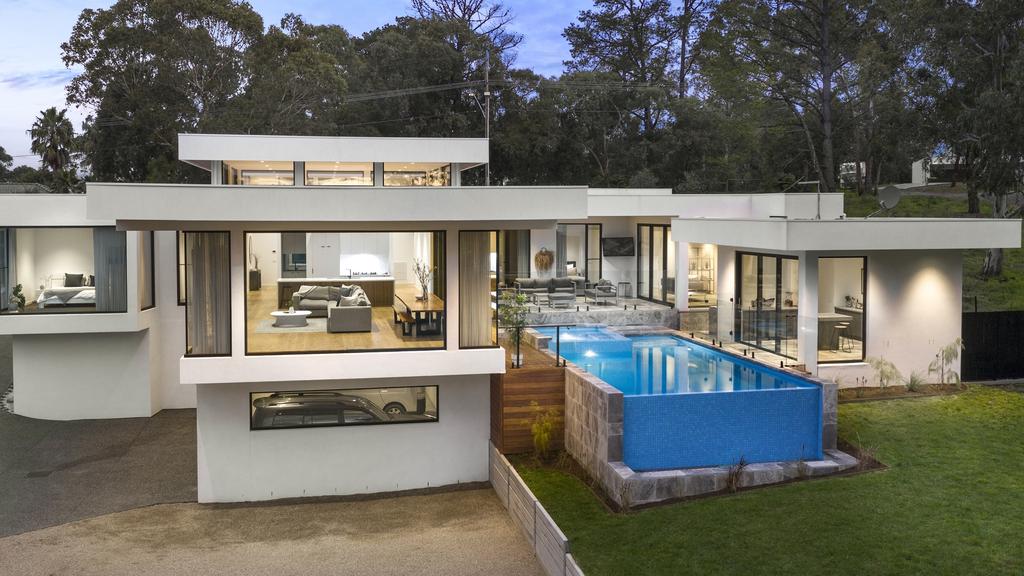
Who needs holidays?
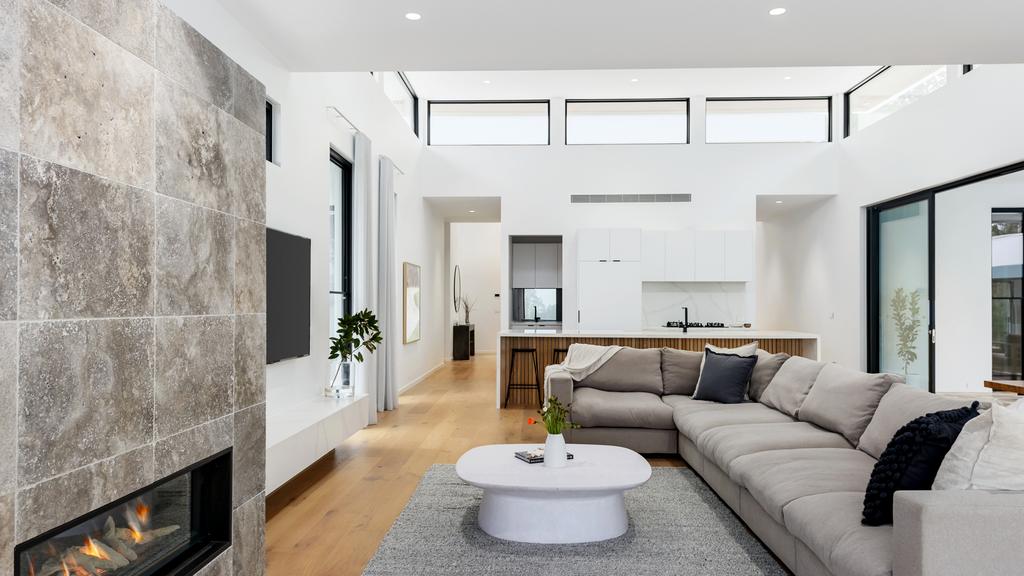
Plenty of natural light for an easy breezy atmosphere.
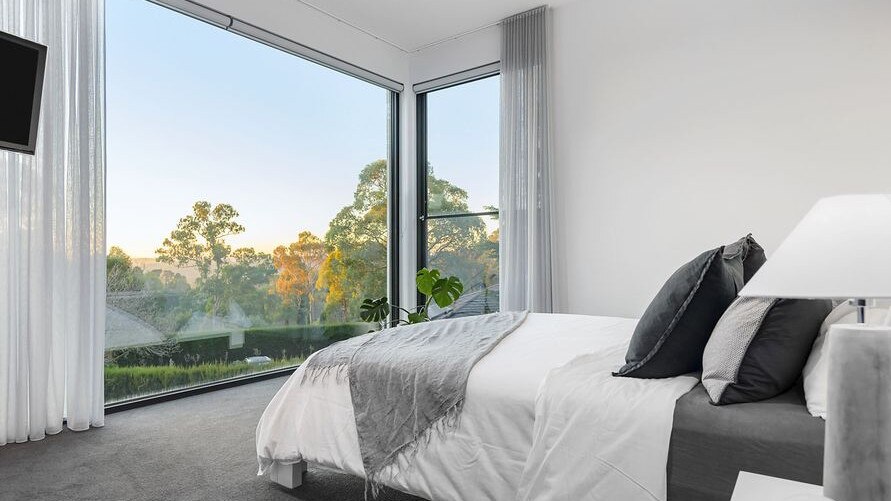
Stretching views from bed.
Jellis Craig Doncaster director Daniel Broadbent said the vendors built the four-bedroom house about a year ago to a “thoroughly modern” design that ensured a seamless connection between indoor and outdoor spaces.
“It has a real sense of volume, high ceilings and beautiful architectural features (including) highlight windows,” he said.
“This type of home doesn’t come along very often.”
Windows so large they had to be craned into place frame lush, leafy views throughout the house — notably from the main bedroom with a walk-in wardrobe and an ensuite, and the open-plan living and dining zone.
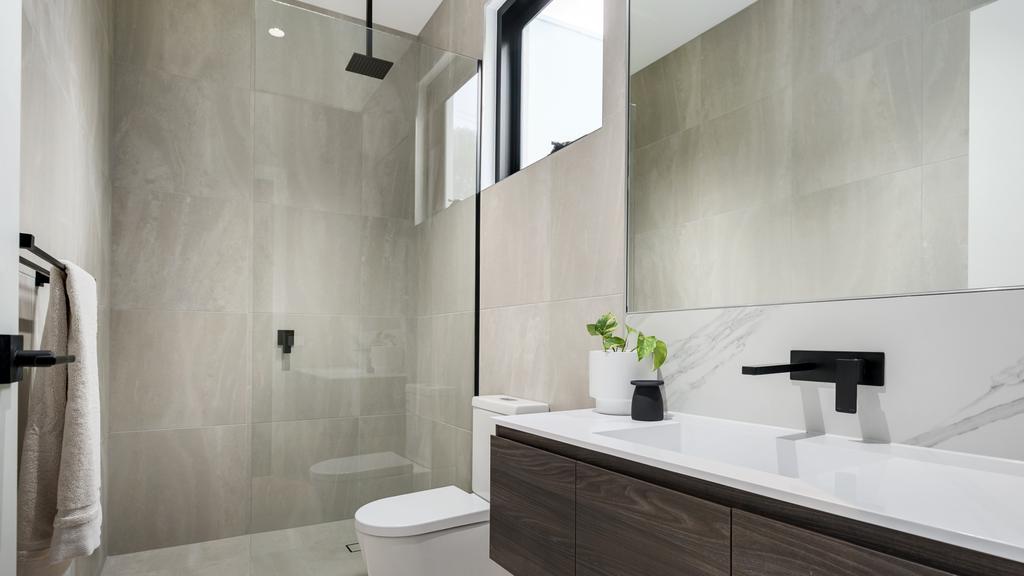
Contemporary luxury.
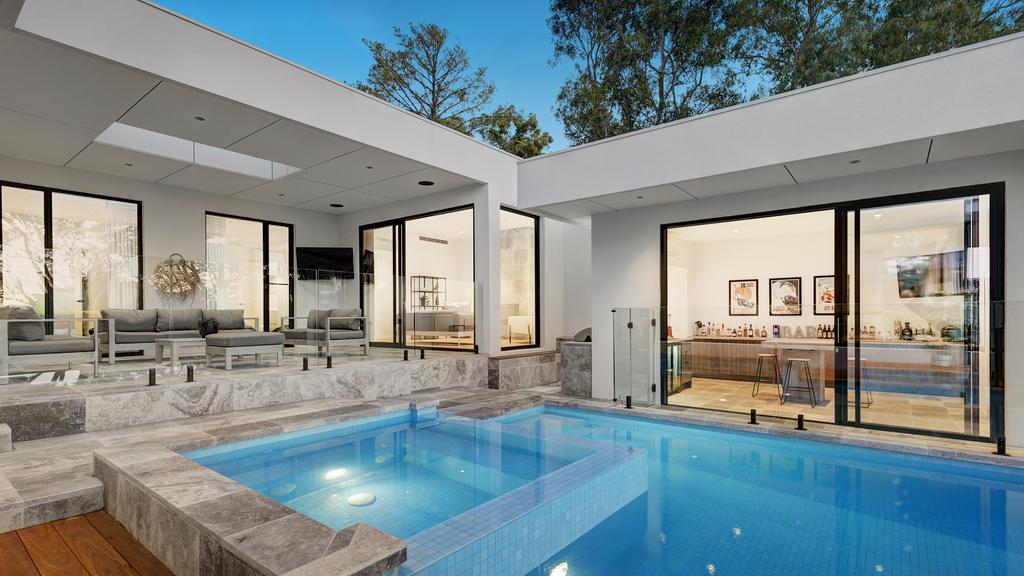
Your own private resort.
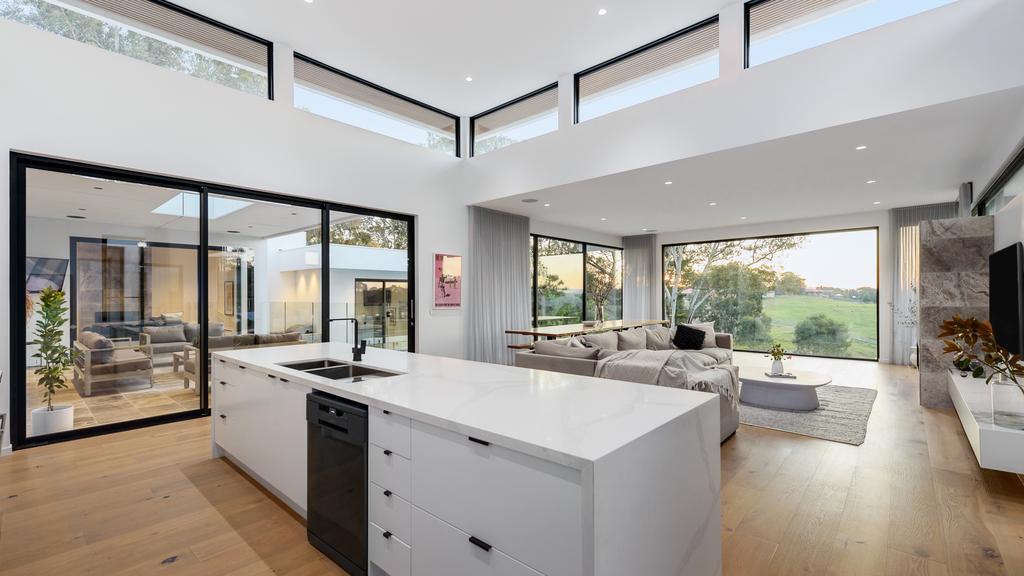
Soak it in.
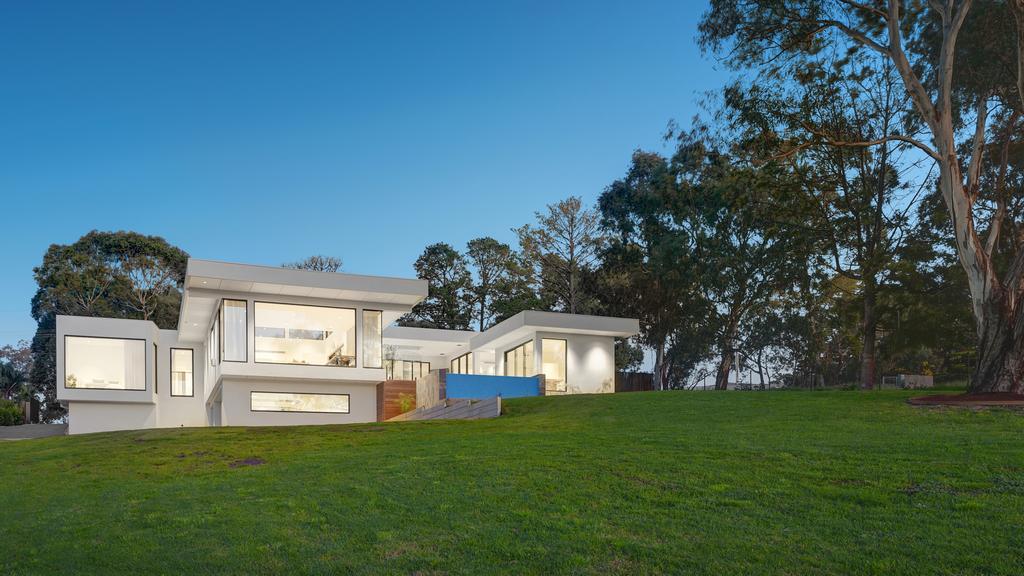
Lush expanses on the big block.
The latter features a kitchen fitted with a 3.8m waterfall island bench, double black matt Bosch ovens, and a butler’s pantry.
The covered alfresco terrace overlooking the pool and spa also has a barbecue nook.
A five-car garage and three further “king-sized” bedrooms complete the luxe package, which is being sold privately.
The property had amassed more than 4000 views on realestate.com.au within a week of hitting the market — almost four times the average for a Templestowe listing.
Mr Broadbent said prospective buyers from near and far were already eyeing the pad, including several from the Bayside region.
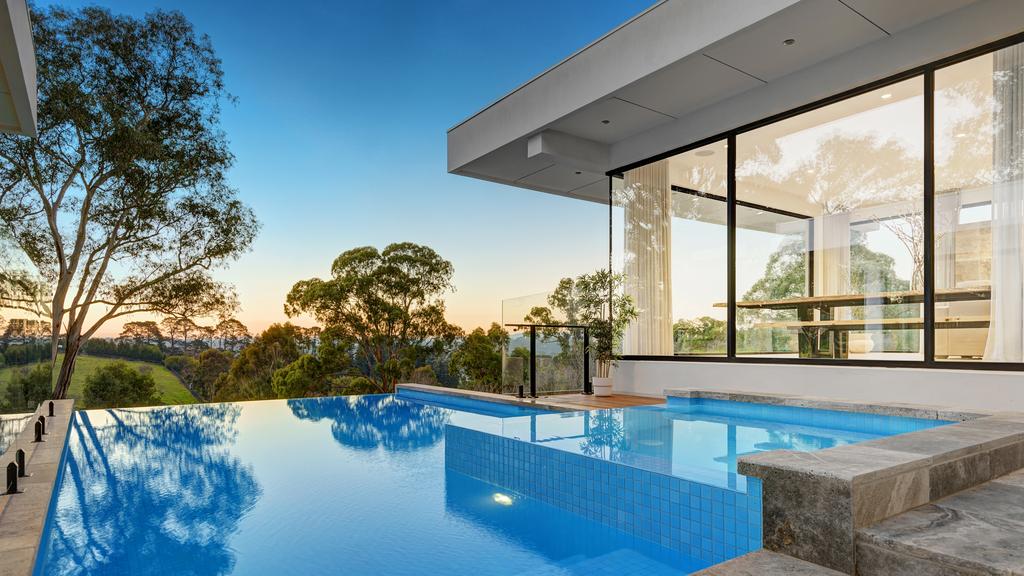
The serenity is unquestionable.
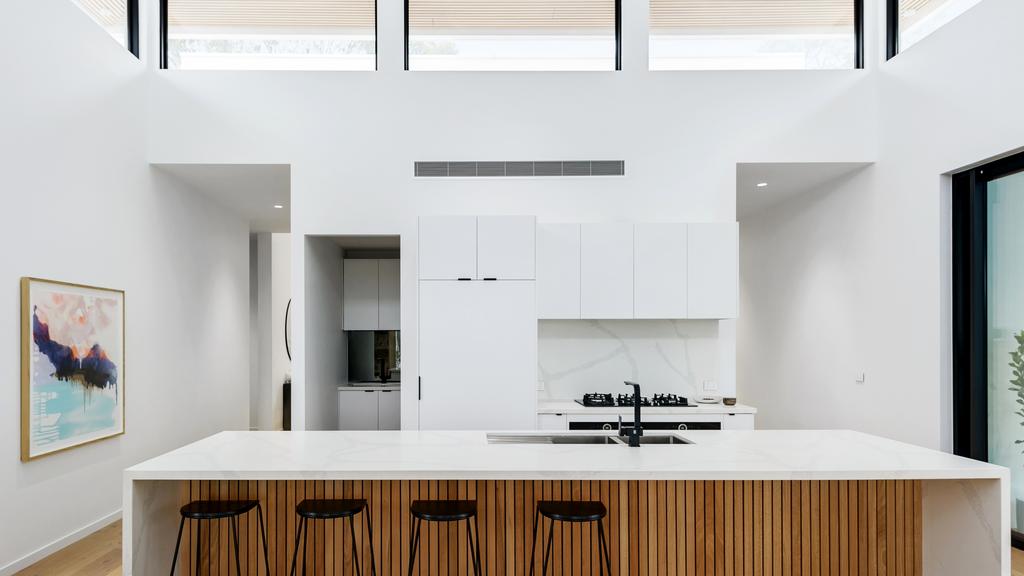
Timber tease.
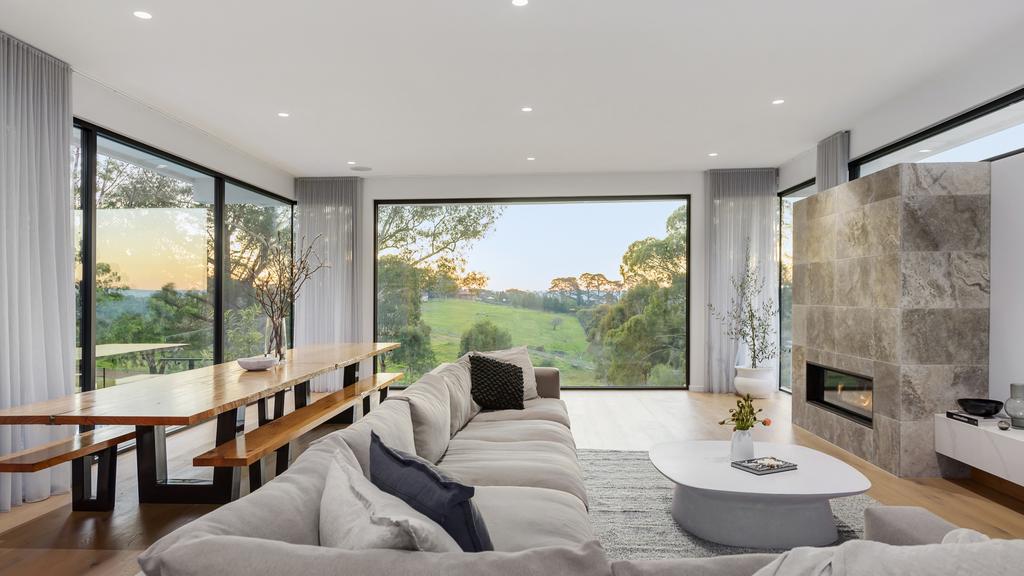
Picture perfect.
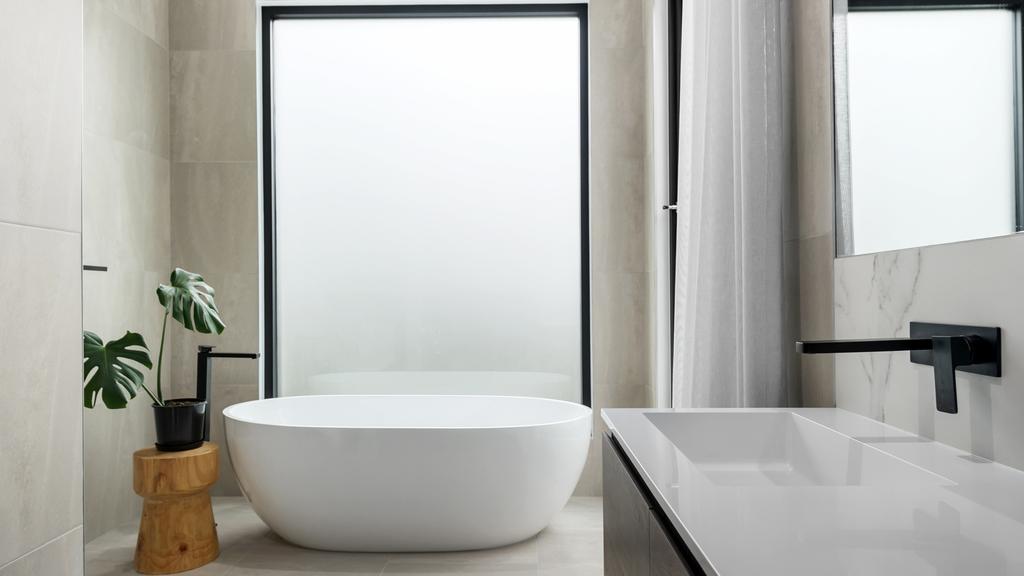
Luxury in every room.
MORE: Elsternwick house sale price gains $300k in one year
West Footscray: Labradoodle dog stars in selling campaign
Melbourne million-dollar suburbs: 21 join the club
The post Templestowe tempter a private resort among the gum trees appeared first on realestate.com.au.
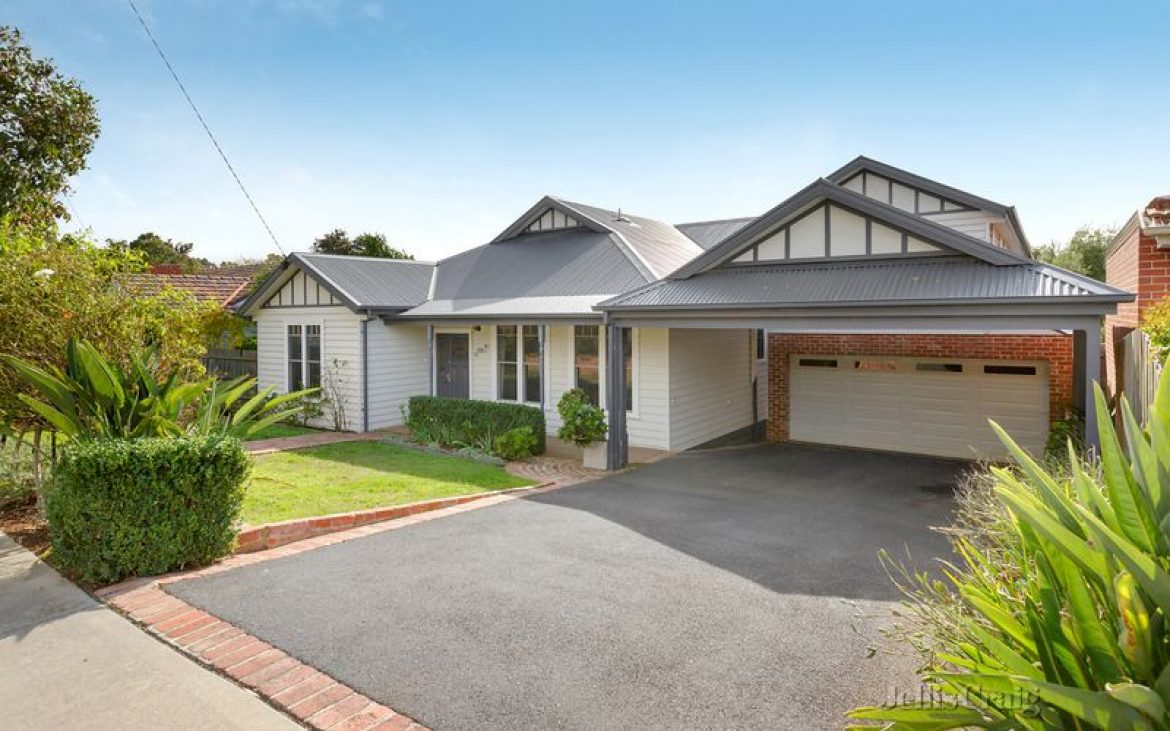
Australia has 46 new million-dollar suburbs despite the global health pandemic and economic recession, while 10 suburbs fell out of the exclusive club in FY20, latest data reveals.
Melbourne saw median house prices in 24 suburbs exceed the seven-figure threshold this year, while Sydney had 15 and Brisbane, seven.
However, median prices in three Melbourne suburbs dropped below the million-dollar mark in FY20, as well as four in Sydney, one in Brisbane and two in Adelaide.
Nerida Conisbee, realestate.com.au’s chief economist, said the premium property market has been “one of the most stable property markets during the COVID-19 pandemic.”
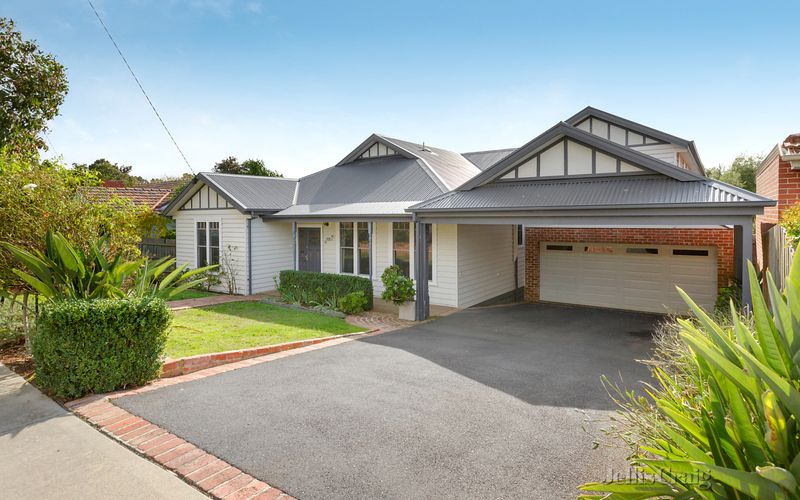
Box Hill South in Melbourne’s east has joined the million-dollar club in FY20. Picture: realestate.com.au
“The property market is currently being supported by high levels of stimulus, a stable banking system, mortgage payment freezes and relative confidence amongst buyers. As a result, pricing has remained stable, despite being in a recession,” she said.
“This is likely due to the strong momentum leading into the shutdowns, and because highly paid sectors haven’t seen widespread unemployment yet.
“Over the last 12 months, more suburbs have entered the million-dollar club than suburbs that have fallen out, but there are still some opportunities to get into a premium suburb for six figures.”
The realestate.com.au median house price data was captured between July 2019 and June 2020, and suburbs with less than 30 sales in this period were excluded.
Melbourne
In Melbourne, these 24 suburbs joined the million-dollar club in FY20, rising from six-figure median house prices in FY19:
“Melbourne has seen the biggest rise in suburbs joining the million-dollar club in Australia. At this stage, it’s too early to tell what impact Melbourne’s second lockdown will have on the market,” Ms Conisbee said.
The city has 119 suburbs with a median of $1m or above, which is up from 98 a year ago, according to realestate.com.au data.
New entries spanned the trendy inner-north pockets of Brunswick East, Preston, Coburg and Collingwood, and inner-west counterparts like Kensington, Flemington and Seddon.
Leafy eastern suburbs featured heavily in the list, including Blackburn North and South, Burwood East and Mitcham, and bayside suburbs such as Cheltenham, Edithvale and Mt Martha.
Box Hill South saw the biggest change in median price for the 12-month period, and Mark Read from Jellis Craig Booroondara said it was likely attributed to a rise in new and renovated housing stock.
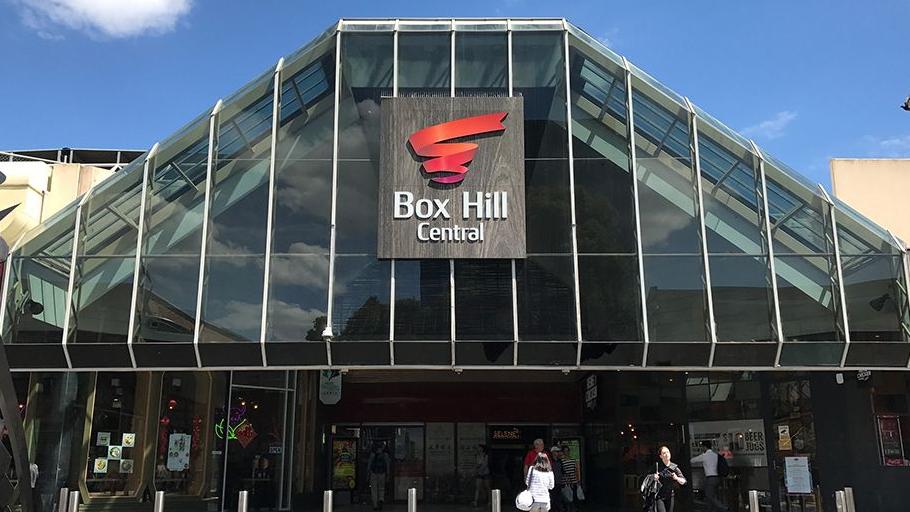
Box Hill is often dubbed Melbourne’s ‘second CBD’.
“I know that a lot of builders over the last five years have built new homes in the area – that before would have been built in Surrey Hills, Camberwell, Balwyn – but uptick in land value in those suburbs means buyers have moved out a little further. So there’s been great success with that,” he said.
“There’s also been new renovations to existing period homes, which are also selling well, and there’s a lot of good schools in the area.”
Updates to school zones has also brought parts of Box Hill South into the coveted Box Hill High School catchment area.
Sydney
Median house prices in these 15 Sydney suburbs surpassed the million-dollar mark in FY20:
Predominantly in Hornsby Shire, The Hills and Sutherland Shire, these areas join 209 million-dollar suburbs in Sydney.
Bexley in the city’s south had the strongest growth of the new entrants, with prices growing $266,000 to $1.251 million. The nearby bayside suburb of Arncliffe also passed $1 million.
Sam Abbas, from Stone Real Estate Rockdale, said Bexley’s price growth was largely driven by buyers from more expensive suburbs seeking more value for money, while remaining close to the city.
“Buyers are transitioning from the inner west, seeking good value,” Mr Abbas said.
“Bexley has nice tree-lined streets and bigger blocks in comparison to the inner west, and is about 20% less [expensive], so it’s more affordable. That’s where I see the price growth.
“About 70% of buyers coming through open homes are from the inner west.”
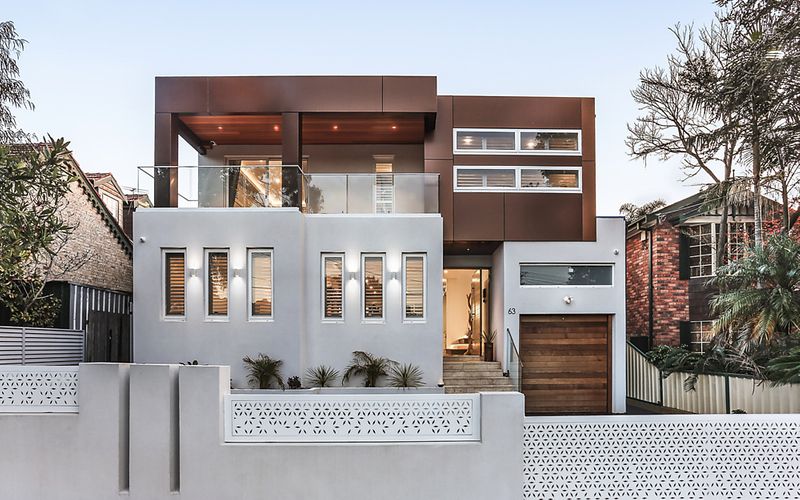
Bexley in Sydney’s south became a million-dollar suburb this financial year. Picture: realestate.com.au
Three suburbs in the Hornsby Shire made the list – Asquith, Mount Colah and Berowra Heights – and The Hills had Glenwood, Winston Hills and The Ponds.
Northmead was the only Parramatta suburb to break $1 million, as well as Wamberal on the Central Coast.
The other new entrants were Jannali, Menai and Yarrawarrah in the Sutherland Shire, and Belmore and Picnic Point from the Canterbury-Bankstown area.
Four Sydney suburbs fell out of the million-dollar list:
- Campsie: $1,190,000 to $985,000
- Lidcombe: $1,020,000 to $980,000
- North Avoca: $1,030,000 to $932,500
- Sutherland: $1,027,500 to $975,000
“Highlighting the extreme pricing of Sydney, 15 suburbs joined the million-dollar club, now bringing the total to 209 million-dollar suburbs and making it difficult to find an inner or middle ring suburb for under a million dollars,” Ms Conisbee said.
Brisbane
Seven Brisbane suburbs joined the million-dollar club for the year to June 2020:
Balmoral was the only suburb to fall off the list, with its median house price slipping from $1.07 million in FY19 to $882,500 in FY20.
“It’s still possible to buy into premium suburbs for under one million dollars in Brisbane, unlike Sydney or Melbourne where that price tag doesn’t necessarily get you into an expensive suburb,” Ms Conisbee said.
One of the more surprising suburbs to make the club was Samford Valley, 20km southeast of Brisbane, with its median house price jumping from $922,500 to $1.1 million in the 12 months to June.
In this area, sprawling acreages can be purchased for an equivalent price to an inner-Sydney apartment.
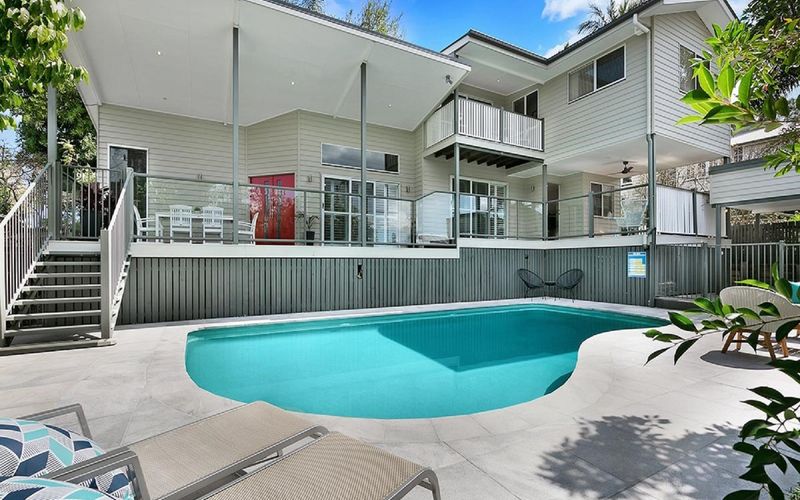
Grange was one of seven new million-dollar suburbs in Brisbane this year. Picture: realestate.com.au
Grange, Clayfield and Ashgrove in Brisbane’s north, Bardon and Fig Tree Pocket in the west, and West End, in the inner south, also joined the list.
In Adelaide, no new suburbs made the list this year, but two dropped out – the median house price in Unley dropped from $1,060,000 to $971,500 and in North Adelaide prices slid from $1,145,000 to $925,000.
“Despite being two of the most popular suburbs on realestate.com.au, Unley and North Adelaide have now dipped under a one-million-dollar median, offering buyers a good opportunity to get into some of the most desired suburbs for less,” Ms Conisbee said.
The post Australia’s new million-dollar suburbs revealed appeared first on realestate.com.au.
